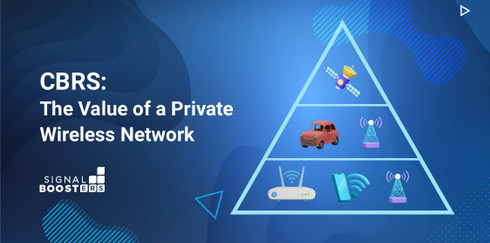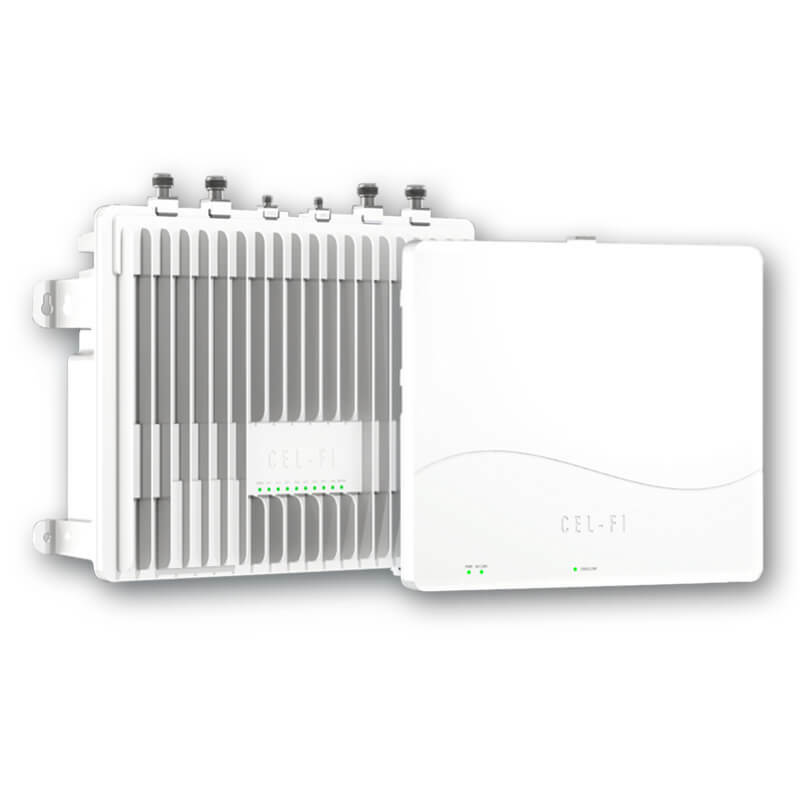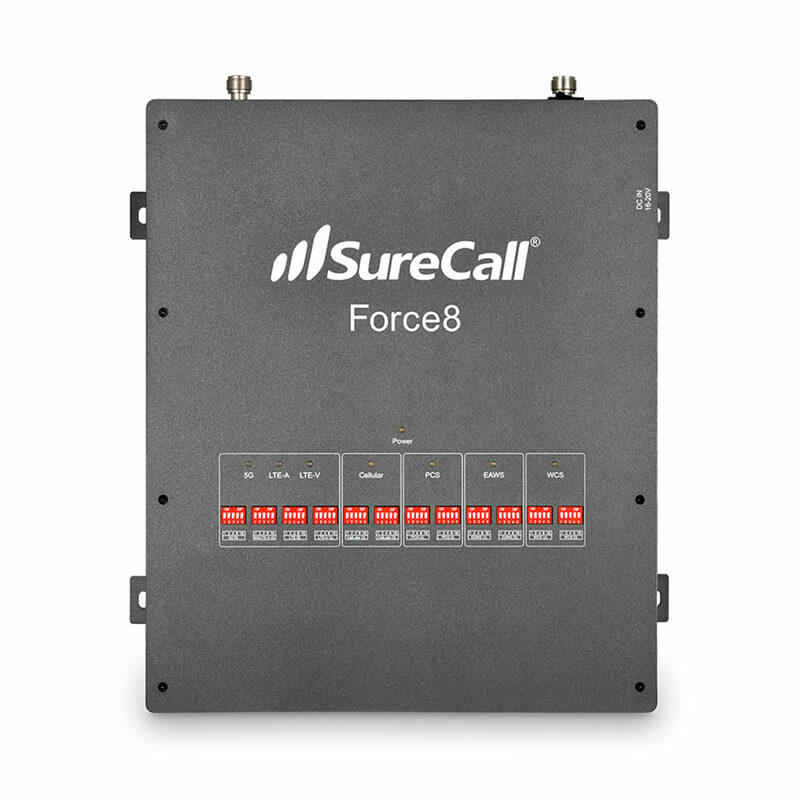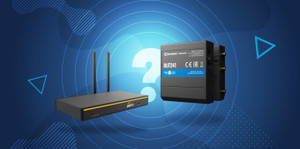CBRS: Discover the Value of a Private Wireless Network
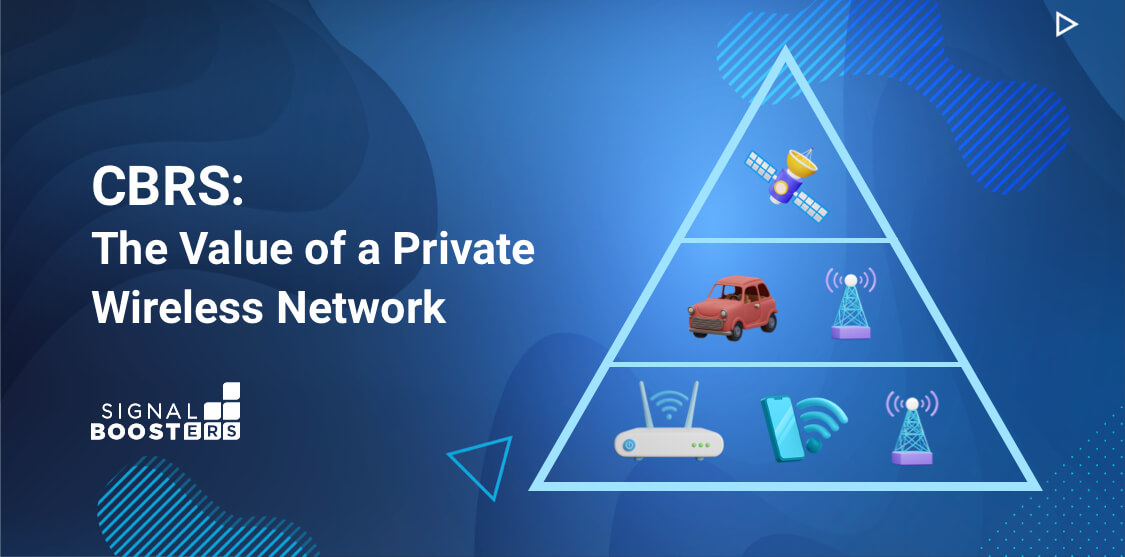
Businesses and homes have created their own private WiFi networks for years. Now, they’re seen as essential. Over the past decade, cellular data has enhanced connectivity all over the world. Nearly 60% of web browsing is done on mobile devices. This is achieved through public carrier broadband over 5G, 4G, or LTE, and WiFi networks. But that looks to change.
In the upcoming years, you will hear the term “CBRS” more and more. CBRS stands for Citizens Broadband Radio Service. It’s enabling IT pros to build out their own, private 4G/5G networks. The implications are massive for business and industry.
Take advantage of our system design and installation services. Learn more or call us for a free consultation: 1-800-969-8189.
What is CBRS?
CBRS refers to a band of cellular frequency between the 3.5 GHz and 3.7 GHz range (3550-3700) in the radio spectrum. These bandwidths were reserved for military access. Then, in 2015, the FCC adopted rules for commercial use of the band.
They developed a three-tiered system of access. Priority and protection against harmful interference being granted were granted to the highest tiers.
- Tier 1 – Incumbent Access: Refers to those already making use of the band as of 2015. This includes satellite and authorized federal users.
- Tier 2 – Priority Access: Certain commercial interests were granted “priority access” to the band in 2020 via an open auction. These entities were granted PALs (Priority Access Licenses) with a 10-year renewable on a county-by-county basis. ISPs like Verizon and Comcast paid the lion’s share to gain access to these bands.
- Tier 3 – General Access: Much like current cellular and WiFi frequencies, the 3.5 GHz band can be used by private citizens if they do not interfere with those in Tier 1 or Tier 2. That is likely where you come in.
This means, with the right approvals, anyone can create a private wireless network on the CBRS bands.
Fine, But What Can CBRS Do?
CBRS can do anything traditional LTE or 5G can do, except within a set location. Pretend it’s a WiFi connection, except using cellular technology. There are dozens of applications for this, but let’s start with enterprise uses.
A business, factory, or warehouse can create a private wireless network to better control access to its data, reduce communication difficulties, create redundancies, power their machine-to-machine and internet-of-things enabled devices, and far, far more. LTE services could hit up to 1 Gbps indoors, with 5G being up to ten times faster. In a world of increasing automation, this can save milliseconds of lag, equating to millions of dollars of value.
This is to say nothing of CBRS’s innate security advantages. Data breaches have increased over the last decade. Even the largest companies have not been spared. Often, this is due to an employee utilizing an unsecure WiFi connection. Cellular data is already more secure than WiFi, and private servers look to be even more so. Network owners will have complete control over which devices utilize their networks via private network SIM cards.
ISPs, cellular carriers, and cable companies spent billions to gain priority access in order to gain access to these bands for a reason. They believe it will expand access to their 4G and 5G networks, replace last-mile fiber access to customer sites, deliver fixed-wireless services, and even create point-to-multipoint connections for rural areas. These bands can also reduce congestion on their primary bands in dense urban zones with high data traffic. If they’re willing to spend billions on it, you know it’s got value.
How Much Does CBRS Cost and How Quickly Can a Private Wireless Network Be Deployed?
Much of that is still being worked out. A great deal depends on where you reside and the scope of the deployment.
Backers of the CBRS technology believe private wireless networks to be far cheaper than a traditional Active Distributed Antenna System (DAS). A passive DAS solution such as a cell phone signal booster will still be cheaper, but certain hybrid DAS deployments could make use of a CBRS private wireless network. These will be the cheapest option for CBRS when they become available.
For any CBRS deployment, one needs approval. CBRS is monitored by the Environmental Sensing Capability (ESC). Devices wanting to create a private wireless network must put in a request to a cloud-based Spectrum Access System (SAS) to reserve the channel in their area.
Such a request can take several months to fulfill. Shortening the wait time for businesses is a major goal for those looking to widen the scope of CBRS.
I’m Sold. I Want CBRS for my Business. How Can I Get It?
Right now, CBRS deployment is being handled primarily by the OnGo Alliance (once the CBRS Alliance). This is a coalition of over 180 businesses in the wireless space dedicated to certifying and vetting CBRS systems and installers. The OnGo Alliance has written a comprehensive guide on deploying CBRS in your business, but it consists of five broad steps.
- Gather Requirements
- Survey and Planning
- Design
- Installation
- Maintenance
If you’ve any familiarity in deploying commercial cellular or WiFi systems, those steps may look familiar to you. Indeed, they should be familiar for any IT professional, as they are the same steps needed to deploy any sort of wireless network. The complexity comes in getting the approval, not deploying the solution.
So, is CBRS Worth It?
It depends on how deep your pockets are, how quickly you need it turned around, and a variety of other factors.
Right now, a passive DAS offers far quicker turnaround for less. These are invaluable if you suffer from poor cellular service or need constant uptime.
When cheaper, quicker alternatives for CBRS become available, we will update this article.
In the meantime, here are a selection of our top Passive DAS signal boosters if you need reliable cell service fast. Or, call us at 1-800-470-6777 and we can get you started. All the below systems need a professional to install and design. We offer professional installation services with our in-house team of experts, so no need to worry on that front.
QUATRA 4000
The Nextivity QUATRA 4000 provides up to +100dB of gain for all carriers. It offers the highest gain and easiest deployment of any of our commercial cellular options, being pre-approved by all cellular carriers. It utilizes CAT5 cable to provide up to 200,000 sq ft of coverage.
Remote management is provided by the Nextivity WAVE Portal, a cloud-based service which allows the Nextivity team to monitor your equipment for you, for a modest fee.
There is also the QUATRA 4000i, which is a Part 90 approved booster needing carrier approval. This allows for more coverage at the expense of deployment time.
WilsonPro 4300
The WilsonPro 4300 is a strong, reliable option, boosting all carriers for a lower price. It can cover up to 100,000 square feet under best conditions.
It has a ton of features. With four outdoor antenna ports, it allows four directional antennas. This lets each carrier receive the maximum boost. Its bright LCD screen shows the booster's current status. The booster can be connected to the WilsonCloud for easy remote monitoring and adjustment. It also comes in either wall-mount or rack-mount format, allowing it to fit in with your IT framework and provide more amplification.
SureCall Force 8
The SureCall Force 8 is the first passive DAS signal booster with 5G capability. Robust and reliable, the Force 8 offers a degree of future-proofing.
With the approval of all boosted carriers, Force8 improves 5G cell service for the T-Mobile (600 MHz band) and AT&T (2.3 GHz band). Force8 is a HetNet and HetGen solution that improves cell service for every US cellular network and all cellular generations including 4G & 5G LTE voice, text, and data signals.
The Force 8 industrial grade cell phone signal booster is equipped with Sentry to allow remote access to adjust the system anytime and anywhere via desktop or mobile application (iPhone | Android).
All Your Signal Boosting Needs In One Place
Signal Boosters is a leading provider of cell phone signal boosters for homes, vehicles, and commercial buildings. We specialize in consumer-friendly kits as well as customized RF systems for cellular, public safety two-way radio, DAS, and WiFi. We intend on offering affordable CBRS solutions as soon as they become available.
We’re here to assist with any issues you might be experiencing with poor cell service. Contact us today, or call us at 1-800-470-6777.
Interested in Learning More? Check Out Our Cellular Info Hub / WiFi Info Hub
Table of Contents

Recent Posts



